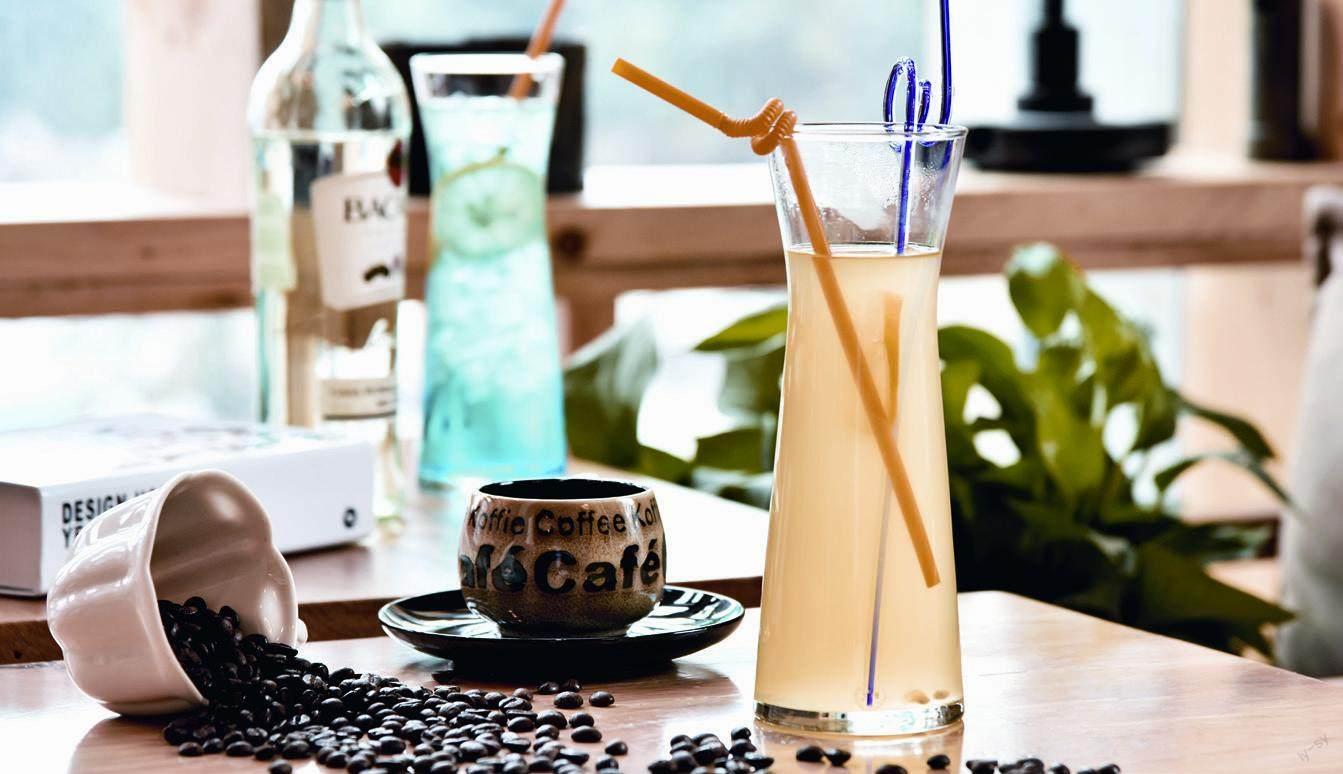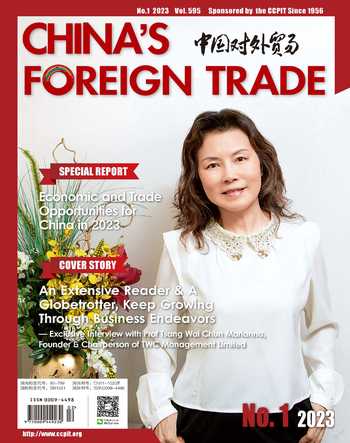The Coffee and Drink Market Continues to Expand
By Jenny Hu
In recent years, with the gradual popularization of consumption upgrading and the increasingly active Generation Z as a consumer group, coffee consumption demand taken off. However, with the development of mobile Internet technology, the forms of “self-pickup + takeaway” and“online + offline” have broken through the boundaries of traditional coffee consumption locations, bringing coffee to the office, home and other locations, and improving the convenience and popularity of coffee consumption.
Domestic coffee consumption demand is on the rise, and the coffee market is expanding rapidly. According to data from canyin88.com, the market scale of Chinese coffee drink reached RMB 60.8 billion in 2021, an increase of 30.8% compared with 2020. As the coffee race continues to be hot in 2022, the scale of the coffee market continues to grow. The canyin88.com Brand Research Institute estimates that the scale of the coffee market will reach a value of RMB 79.7 billion in 2022.
Local coffee brands are rising rapidly
As the domestic coffee and beverage market continues to grow, local coffee brands such as Luckin Coffee, Manner Coffee, NOWWA and Lucky Cup are rising in popularity rapidly, and the competition pattern of the whole category has gradually changed from Starbucks domination into a situation of “two superpowers and many strongs”.
As the worlds largest coffee chain brand, Starbucks is famous for its “third space” positioning, emphasizing the social and business attributes of coffee, and has a large number of fans in China. The number of Starbucks stores in China reached 6,489 as of November 17 2022, according to data on canyin88. com. However, in recent years affected by the pandemic and the rapid rise of domestic coffee brands, combined with the increasingly diversified domestic coffee consumption demand, Starbucks reached a bottleneck.
At present, Luckin Coffee is the coffee brand with the largest number of stores in China. Luckin Coffee does not emphasize social commerce; instead, it aims at consumer demand for convenient, fast and cost-effective coffee drinks in a differentiated way. It has rapidly built a large number of stores through the by opening smaller sized stores. According to data from canyin88.com, Luckin has 7,481 coffee stores in more than 280 cities throughout China. According to Luckins financial statement, the total revenue of Luckin coffee was RMB 3.299 billion in the second quarter of 2022, a year-onyear increase of 72.4%.
Different from the casual business style of Starbucks, Mstand, which also emphasizes the “third space”, uses an aesthetic atmosphere to shape brand image through the concept of “one store one design”. MStand also caters to consumer networks social need to take photos. In addition, NOWWA Coffee, which focuses on fruit coffee, and Lucky Coffee, which targets low-tier cities, are also developing rapidly. At present, the number of stores of these two brands has reached over 1,000.
In the category of coffee drinks, in addition to chain coffee brands, convenience store coffee drinks are also a considerable force. Convenience stores are close to consumers, have obvious channel advantages, and have high cost performance. Therefore, coffee and drinks in convenience stores are favored by many white-collar consumers. Taking Parcafe as example, data shows that more than 2,600 stores have settled in Family Mart and its sales have been growing for years since its launch in 2014.
In addition to chain coffee brands and convenience store coffee brands, there is another coffee model —independent cafes. Most independent cafes are operated by single shops, with personalized decoration styles and an emphasis on the flavor of the coffee itself, quality of coffee beans and user experience, but with limited SKUs. Due to its unique business model and operation logic, independent cafes have a relatively low degree of standardization and chain operation. Although the independent cafes are generally small in scale, there are a large number of independent cafes in China, which occupy a large share of the coffee and drink market on the whole.
Racetrack entrants keep coming
Qichacha data shows that as of November 17, 2022, the registered number of coffee-related catering enterprises reached 17,700, which exceeded the number registered in all of 2021. The total number of existing enterprises has also increased significantly. During the same period, the net growth of coffee-related catering enterprises has reached 13,600.
According to incomplete statistics from the canyin88.com Research Institute, as of November 17, 2022, there were 20 crossover brands that have launched new brands, registered coffeerelated trademarks and launched coffeerelated businesses.
At present, cross-border enterprises can be divided into two categories. One is the catering industry. In 2022, many brands of tea drinks, noodle restaurants and Chinese dinner brands entered the coffee market by adding coffee products, launching coffee brands or investing in coffee enterprises to expand their business boundaries. For instance, Heytea, Naixue, Mixue Ice Cream & Tea and CoCo have nudged into the coffee niche by launching new brands or investing in coffee brands. Goubuli steamed bun registered Gloria Jeans Coffees, and Taier Sauerkraut Fish invested in DOC coffee. In 2022, Chayanyuese launched a new brand Yuanyang Coffee, and Sweet7 launched a coffee sub-brand called Brisky Coffee.
The other category is cross-border companies from different sectors with different purposes to nudge into the coffee market, whether to reach young consumers, or to provide a better consumer experience, or to survive the tough market, or try to find a new growth niche. For example, Yuanfudao launched the coffee brand Grid Coffee, positioning boutique coffee shop; Xtep applied for registration of the trademark of “X coffee”; RELX Technology launched the coffee brand ON, and NIO registered the coffee trademark of “NIO CAFE”.
The development of coffee drinks follows a remarkable phenomenon of uneven regional distribution. According to data from canyin88.com, as of November 17 2022, the total number of coffee and drink stores in China reached 64,600, of which nearly 50% are located in East China. With relatively fast economic development, East China has high popularity and user acceptance of coffee, and the development of the coffee and drink market is relatively mature with many coffee and drink stores emerging.
By November 17, 2022, Jiangsu and Guangdong had the largest number of coffee and beverage stores, accounting for 12.2% and 10.3% of stores nationwide respectively. The number of coffee and drink outlets in Shanghai followed with 8.0%. Besides Beijing, Shanghai, Guangzhou and Shenzhen, many new first-tier and second-tier cities have produced a batch of potential small- and medium-sized coffee drink brands, such as WaiX Coffee in Ningbo, Coco.Juliet in Shaoxing, DOC Coffee in Changsha, Bestar coffee in Suzhou, store by.jpg coffee in Guangzhou and Xiaoyangqiao in Hainan.
From coffee and drink brand financing data in 2022, regional brands accounted for the majority of the 20 coffee and drink brand financing events. Seven brands like FELICITY ORIGIN, Bestar Coffee, Iserdo Coffee, Xiaoyangqiao, Buff Cafe and vinvin Coffee have all received RMB 10 million of financing.
Coffee and drink brands are becoming localized
Especially with the rise of emerging coffee brands represented by Luckin Coffee and the gradual acceptance of economy coffee brands such as Lucky coffee and ParCafe by consumers, the trend of popularization and parity of coffee drinks is gradually showing. There are excellent brands in the coffee and drink market from the low price point to the higher end, and consumers have more diverse choices.
Coffee drinks with a Chinese breakfast has become an innovative idea of many brands. So far, a number of brands have made attempts at capturing the Chinese breakfast market, such as Hefu Noodle which launched the subbrand PickME coffee and hot food, featuring coffee drinks and noodles, rice and other hot food products; On November 6, 2022, MStand announced the launch of fried bread sticks and Chinese style baked roll products. Ollie nollie features coffee drinks and Chinese hamburger; Two Guys launched coffee drinks and wonton.
Facing increasingly fierce competition in the coffee drink market, it is difficult to occupy a place in the middle- and high-end coffee drink market. Therefore, some economy coffee drink brands have begun to explore lowend market potential with differentiation. They abandoned the labels of “elite” and“high-end”, adopted a parity strategy, lowered the threshold for consumers, and took the lead in grabbing the lowend consumer market. The representative brands are Lucky coffee under Mixue Ice Cream & Tea and niiice café under Huazhu Hotel Group, both of which now have more than 1,000 stores.
Industry experts pointed out that many modes and formats of coffee drinks coexist in China, but the competition battlefield is mainly concentrated in first-tier cities and new first-tier cities. Therefore, many coffee drink brands begin to try to layout markets in the lower-tier cities, such as Starbucks, Luckin Coffee and other leading brands have made attempts in the lower-tier cities in recent years.
In the lower-tier markets, Mixue Ice Cream & Tea, followed the previous development strategy on the coffee track and incubated the affordable coffee brand Lucky Coffee. According to data from canyin88.com, as of November 2022, Lucky Coffee has more than 1,400 stores, 70% of which are located in the third-tier cities and below. Compared to fierce competition in first-tier and new first-tier cities, lower-tier markets may become another battlefield for coffee brands in the future.
In addition, as the competition of coffee drinks intensifies, the upstream layout of the industry and the construction of digital system will become an inevitable trend. On the one hand, coffee and drink brands have penetrated upstream of the industrial chain and created exclusive supply chains, which can not only reduce the cost of raw materials, but also ensure the stability of raw material supply and product quality. On the other hand, the establishment of the digital system is conducive to scientific decisionmaking and management of coffee and drink brands. With the rise of Chinese traditional culture, coffee and drink brands may integrate Chinese elements into coffee and drink products and store styles to create a new consumption hotspot of traditional culture.
- China’s foreign Trade的其它文章
- Development Thoughts on Promoting China’s Tea Export
- CCPIT Overseas Representative Offices Work Meeting Held
- Economic and Trade Opportunities for China in 20233
- China’s Actual Utilized Foreign Capital Reached New High in 2022
- The National Economy Withstood Pressure and Reached A New Level in 2022
- An Extensive Reader & A Globetrotter,Keep Growing Through Business Endeavors

